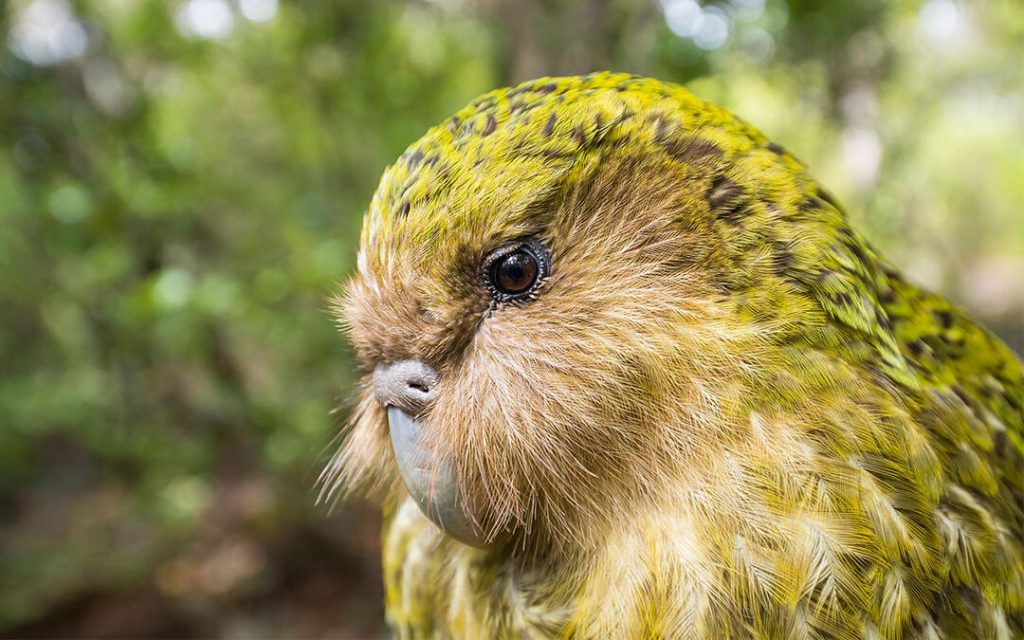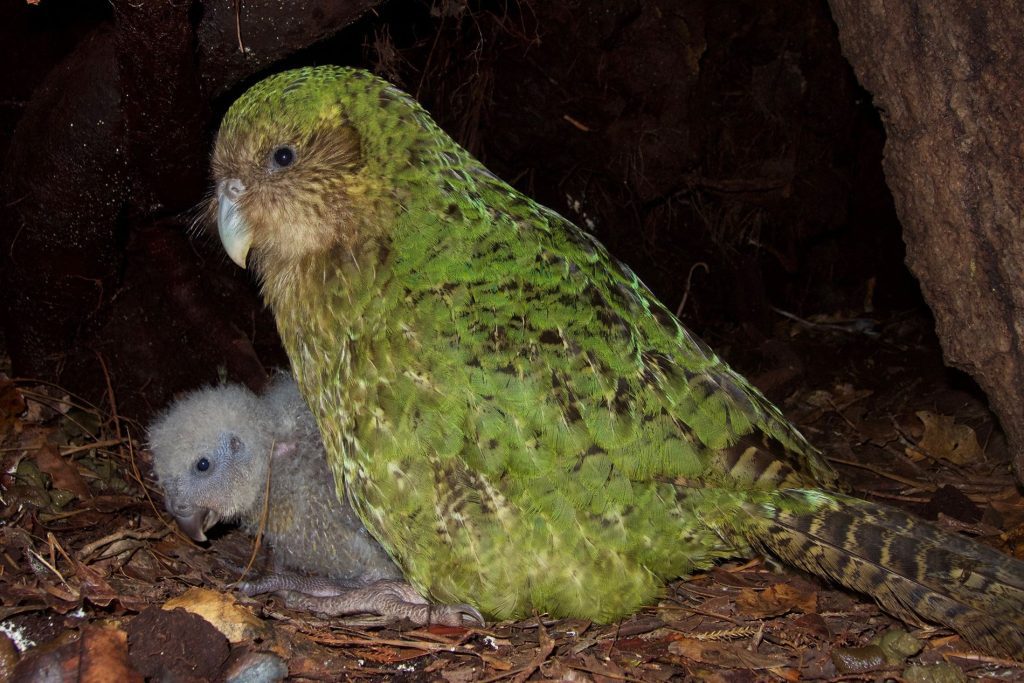Back from the Brink: Breakthrough Artificial Insemination Program Keeping NZ’s Kakapo from going Extinct

(EnviroNews World News) — A critically endangered flightless parrot is making a miraculous recovery thanks to artificial insemination. Conservation workers have for three decades been working tirelessly to boost the bird’s population, and have finally made a giant breakthrough.
New Zealand’s treasured Kakapo (Strigops habroptilus) — the world’s only flightless parrot species — has teetered on the brink of extinction for more than 40 years. But the population has now recovered to around 252 birds, the highest number in more than half a century, according to the country’s Department of Conservation.
The Kakapo, sometimes referred to as the ‘owl parrot’, is a nocturnal bird treasured by the native Maori people and which used to be found throughout New Zealand. It has a face that resembles that of an owl, a bloated belly and it can live for up to 100 years.
But over the last few decades it has suffered a catastrophic drop in numbers, partly due to loss of habitat, but mostly due to ground-dwelling predators introduced by European settlers such as rats, stoats and cats, which have preyed upon this vulnerable flightless bird.
Since 1995, when the population dropped to just 50, the Department of Conservation’s Kakapo Recovery Program has been offering supplemental food, ridding the birds’ homes of invasive predators and, when necessary, hand-raising chicks which are ill or underweight. The vital work takes place on three of the country’s islands: Codfish, Anchor, and Little Barrier —the only places in the world where Kakapo are known to exist.
But only in the last few years has the program produced noteworthy results. The magic recipe has not been a special type of food, nor the introduction of a new type of habitat, but a very modern approach.
The team has been sowing success via artificial insemination — a crucial process for a species which is known for its low fertility rates and for breeding only every two to four years. Scientists have been carefully and painstakingly impregnating the females using sperm extracted from the males.
The bird has also been helped this year by an excellent yield of rich rimu tree berries, high in vitamin D and calcium, which the kakapo feed their offspring.
The country’s conservation minister Poto Williams proudly announced this in mid August in a statement:
Between 2009 and 2019, with the help of international experts, five chicks were produced by artificial insemination. Due to COVID-19 border closures, the team tackled the project alone in 2022 and produced a record-breaking nine chicks. This has been the second-biggest breeding season, leading to the highest number of birds since the 1970s, but we can’t take our eye off the ball.
This means the 2022 breeding season brought 55 new chicks, increasing the kakapo population by almost 28 percent since last year, when there were 192 birds.
Dr. Andrew Digby is a science adviser for the recovery program. He explained to USA Today why the Kakapo is such a special species:
It’s the bird that doesn’t really know it’s a bird; it doesn’t behave like a bird at all. It behaves much more like a mammal. It lives on the forest floor. It climbs trees and nests in holes on the ground. It moves very slowly. It may be one of the longest living — if not the longest living — bird on the planet.
The kakapo’s breeding habits are also somewhat unusual. Males are known for gathering on hilltops and creating display arenas in which they dig holes in the ground before connecting them via a series of tracks.

There they wait, one per hole, blowing up their bellies like footballs while making a loud booming noise. The low frequency din attracts females who scour the arena before choosing their favorite.
Asked, what was the secret to the program’s success, Dr. Digby told USA Today this:
This sort of conservation takes a long time. You can’t just go in and do it for a couple of years and then think everything’s going to be solved. We focus on the technology a lot, which enables us to manage them more efficiently and less intensively.
Tireless efforts to save the Kakapo have however not always been so successful. In 2016 the then Conservation Minister Maggie Barry told American non-profit environmental organization Audubon how flash floods had swept through one of the islands, killing three of the chicks being carefully monitored by the program. Three years later the Department of Conservation announced that another chick had been lost, this time to the fungal disease aspergillosis which had been known to be causing problems for the kakapo population of Codfish Island.
But for now the news is good. And that’s a welcome relief — not only to nature lovers but for people who love to post cute pictures on social media too. The Kakapo has proven itself to be quite the internet star in recent years, taking center stage in a string of GIFs and short videos.
Most famous was the dancing kakapo which stormed onto the front page of the image sharing network Imgur, when user prinnnneh asked fellow users to repost a GIF of the adorable bird and donate to the recovery program. The 48-hour campaign raised more than $3,000 NZD.

Meanwhile, Dr. Digby’s Twitter feed, a mix of scientific facts and light-hearted videos of kakapos dancing, calling, plodding around and generally being very funny, has proved a big hit, amassing nearly 25,000 followers. By far the most popular of his posts was a slow motion video of a kakapo dancing in the undergrowth alongside the good doctor’s outstretched arm.
Want to know more about the world’s weirdest birds? You’ve come to the right place. I show #conservation of #kakapo and #takahe in #NewZealand. Come for the videos; stay for the science! pic.twitter.com/Byt1uvCtix
— Dr Andrew Digby (@takapodigs) April 30, 2019
But no GIF nor tweet can compare with the endless entertainment provided by New Zealand’s most infamous kakapo who in 2009 “made love” to BBC photographer Mark Carwardine’s head while excitably slapping him around the cheeks with his chunky wings.
The clip, extracted from Stephen Fry’s Kakapo Parrot’s Future – Last Chance to See program, saw the British presenter famously exclaim, “I’m sorry but it’s one of the funniest things I’ve ever seen. You are being shagged by a rare parrot.” The video has been viewed more than 22 million times.
FILM AND ARTICLE CREDITS
- Dan Keel - Journalist, Author



